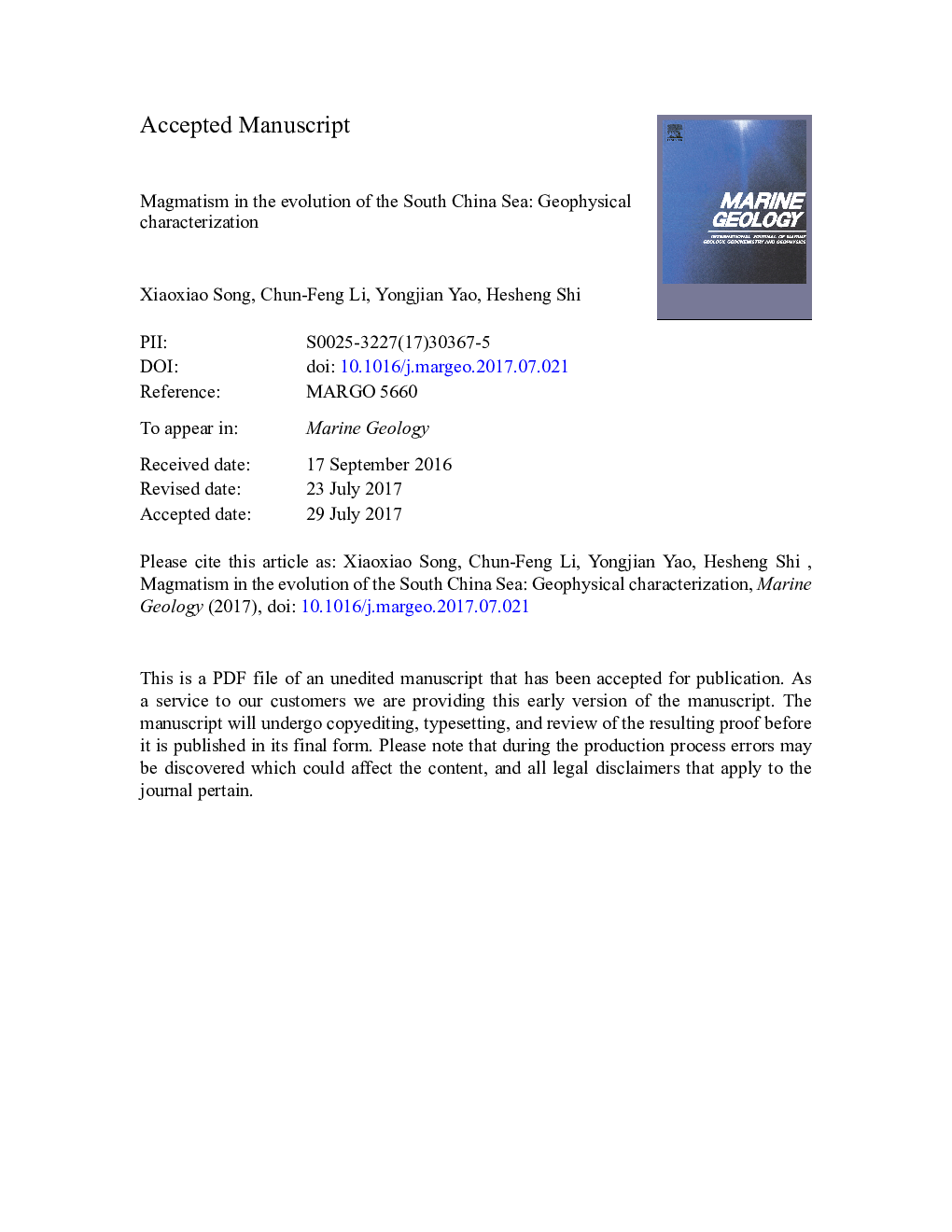| Article ID | Journal | Published Year | Pages | File Type |
|---|---|---|---|---|
| 8912057 | Marine Geology | 2017 | 36 Pages |
Abstract
Timing, distribution, and intensity of magmatism are critical to understanding deep lithospheric processes in the opening of the South China Sea (SCS). Based primarily on multichannel seismic reflection data, and aided with gravity and magnetic anomalies, we identify various igneous features, such as sills, stocks, volcanic edifices, and volcanoes, which are often characterized by high positive seismic amplitudes, and/or by chaotic or blank reflections beneath them because of their seismic shielding effect. We estimate the timing of igneous activities and analyze their areal distribution in the SCS region based on seismic stratigraphy. We confirm that most igneous emplacements in the SCS margins occurred after the cessation of seafloor spreading, and are sparse and volumetrically small during the rifting and seafloor spreading phases, supporting magma-poor margins prior to the breakup of the continental lithosphere. By contrast, post-spreading magmatic activities are widespread in the continental slope areas and in the central SCS basin, and are most likely triggered by extension in relation to cooling and subsidence of the oceanic and attenuated continental lithosphere, which could accumulate a total thermal contractional displacement up to 24Â km.
Keywords
Related Topics
Physical Sciences and Engineering
Earth and Planetary Sciences
Geochemistry and Petrology
Authors
Xiaoxiao Song, Chun-Feng Li, Yongjian Yao, Hesheng Shi,
